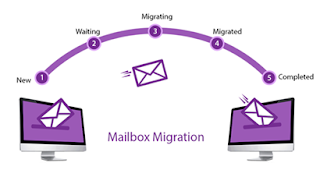Hybrid Migration to Microsoft Office 365
Migrating any application to a public cloud is very similar to a migrant’s journey into a new land. Listening to success stories of new opportunities in the new land, a person takes the leap of faith to try it for himself. While it knows it has worked for many others, it doesn’t know if the new land will work for him because after all, everyone of us is unique.
Losing sight of the homeland onboard a plane (or vessel), every migrant’s heart is pounding filled with a mix of fear and hope.
When it comes to organizations using Microsoft Exchange, many of them have taken a leap of faith to move their email and messaging into Microsoft 365 public cloud. They spend weeks to months preparing for the ‘cutoff time’, a time when the mailboxes actually start to move from their years’ old on-premise MS Exchange into Microsoft 365 public cloud. For the IT Admin staff, this is the moment of mixed fear and hope; migration has kicked off...!
But with newer hybrid cloud technologies, it need not look like a ‘migration’. Hybrid cloud technologies enable peaceful co-existence of on-premise infrastructure with one or more public clouds as long as needed.
- Self Serve Dashboards for all applications
- IT Admin Dashboards
- APIs for all control tasks
- Fully automated provisioning and lifecycle.
For the specific case of migrating Exchange and other Microsoft enterprise applications and user accounts into Microsoft 365, the hybrid cloud approach provides the true essence of cloud computing in enabling ‘just as much migration as and when desirable’.
Mailbox Partitioned Configuration
In this hybrid cloud configuration, within an Active Directory Organizational Unit (OU), the IT staff chooses one or more mailboxes to be moved to Microsoft 365. Mailboxes are created automatically in Microsoft 365, the attached .psd files containing email and other data start to be exported, while this and all other mailboxes continue to operate as normal.

IT staff can the choose to move some more mailboxes. They can plan to eventually move all mailboxes but to fulfill their organizational goals, they may choose to keep some mailboxes on-premise forever while only moving some to Microsoft 365.
This is usually done to either provider higher management with better options available in public clouds while keeping other staff on-premise. Or it may be to satisfy regulatory restrictions of keeping sensitive email data within a geographical boundary covered by on-premise infrastructure.
Application-Partitioned Configuration
In this hybrid cloud configuration, the IT staff chooses to turn on some applications into Microsoft 365 while keeping others applications on-premise for the same user.
A typical example is to keep email at on-premise MS exchange for some user while creating its account in Microsoft 365 for Skype for Business access.
Such things can be done for the interim period or may be permanent configurations.
Such hybrid cloud flexibility gives IT staff the freedom to choose how, when and what to migrate to public and again if something doesn’t work, bring it back on-premise without much hassle.
Talk to our expert on hybrid cloud options & get free expert consultation










Post a Comment